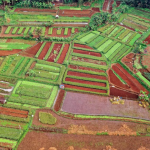Introduction
Urban farms have emerged as a sustainable solution to address the challenges of food production, ecological balance, and the growing demand for locally sourced fresh produce. As our cities expand, the concept of urban farming has gained significant traction, transforming vacant lots, rooftops, and community spaces into thriving agricultural hubs. This article aims to delve into what urban farms truly encompass, the benefits they offer, and their role in creating healthier and more sustainable urban environments.
The Definition and Scope of Urban Farms
Urban farms, also known as urban agriculture, involve the cultivation of crops and rearing of animals within cities and urban environments. This concept aims to bring farming closer to urban dwellers, promoting self-sufficiency, reducing carbon footprints, and fostering a stronger sense of community.
The scope of urban farms can vary widely, ranging from small community gardens to large-scale rooftop farms and vertical agriculture systems.
Types of Urban Farms
1. Community Gardens: These are small-scale urban farms managed and maintained collectively by local communities. They serve as valuable spaces for education, community engagement, and the cultivation of fresh produce for personal consumption.

2. Rooftop Farms: Utilizing otherwise unused rooftop spaces, these farms maximize urban areas’ available land by utilizing innovative techniques such as hydroponics or aeroponics. Rooftop farms provide numerous benefits, including improved insulation, reduced stormwater runoff, and fresh produce directly supplied to nearby markets and restaurants.

3. Indoor Vertical Farms: Vertical farming involves growing crops in vertically stacked layers, often utilizing artificial lighting and hydroponics. This space-efficient and controlled environment enables year-round production, eliminating the limitations of seasonality and adverse climate conditions.
The Benefits of Urban Farms
Environmental Benefits
1. Improved Ecological Footprint: Urban farms play a vital role in reducing the transportation distance of food, resulting in decreased carbon emissions and a more sustainable food system.
2. Enhanced Biodiversity: Urban farms can serve as habitats for various plant and animal species, promoting biodiversity within densely populated areas.
3. Efficient Land Utilization: By utilizing underutilized urban spaces, urban farms make efficient use of existing land and combat urban sprawl.
Social and Economic Benefits
1. Food Security: Urban farms contribute to food security by reducing reliance on external food sources and providing fresh produce to communities that may lack access to nutritious food options.
2. Community Engagement: Urban farms create opportunities for community members to come together, share knowledge, and actively participate in sustainable food production.
3. Economic Development: Urban farms can stimulate local economies by creating job opportunities, supporting small-scale businesses, and contributing to the local food industry.
Conclusion
Urban farms represent an innovative and sustainable solution for cities worldwide, addressing crucial environmental, social, and economic challenges. By reconnecting urban dwellers with agriculture and fostering a sense of responsibility towards our food systems, urban farms pave the way for greener, healthier, and more resilient cities. As we continue to adapt to the demands of urbanization, embracing and supporting the growth of urban farms is essential to ensuring a sustainable future for all.



